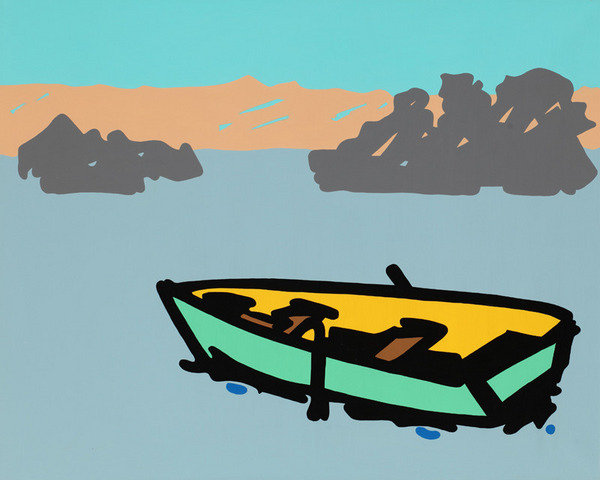A Modest Russian Landscape
dal 4/4/2015 al 31/5/2015
Segnalato da
4/4/2015
A Modest Russian Landscape
Gridchinhall, Moscow
Nikita Alexeev and Boris Matrosov presents paintings about the russia's nature. For the show they both ask 'what can an artist who has set himself the goal of examining the Russian landscape do?'

Russian nature (here we are referring to the central belt of the European part of Russia, where Russian cultured formed) is modest, and not distinguished by any great dramatic qualities. There are no mountains, no seas, no grandiose waterfalls, no endless wastes. What do we see around us? Forests, fields, gently sloping hills that often can only really be described as hills at a stretch, rivers, often small and more akin to streams, lakes and marshes. Among all this, at some distance from one another, villages, settlements, towns and cities have been scattered about.
Usually, unlike the towns and cities of Western Europe, they cannot boast of any developed or preserved civic fabric, even if they have existed for several centuries. They are chaotically developing, sporadic settlements, and Moscow, the main city in Russia, inhabited by 10 percent of the country’s population, is an excellent example of this. In Moscow there are islands of beauty, but for the most part it is a characterless city, cluttered with square boxes for collective living, nonsensical shopping and business centers and skyscrapers that are entirely out of place in the central Russian landscape.
What can an artist who has set himself the goal of examining the Russian landscape do? His task is not an easy one. Although there have been several wonderful landscape painters (Ivanov, painting views of the Roman Campania, Levitan, Vasiliev, Leonidov and Nissky are all artists of global standing), a landscape school in Russia, unlike in France, Germany, Italy and the Netherlands, never established itself. Why? Of course, Bruegel and Hobbema, Giovanni Bellini and Piranese, Altdorfer and Friedrich, Poussin and Cezanne never have to invent anything, or to seek out something in their surrounding landscapes that wasn’t there. Even back in those ancient times, the Dutch marshes, the Alps and the Venice lagoon were all psychologically closer than now, in the age of flight and in the virtual era, than a Moscow district such as South Butovo is, say, to the upper reaches of the Danube.
Nevertheless, we must take a good, long look at the fluctuations of the horizon around us, at the bushes, at the gaps in the brickwork, at how the clouds sail over beheaded Moscow poplars. It seems that we can do this in two ways.
The first, chosen by Boris Matrosov, is to get as close as possible to what the artist is trying to depict: to tear the reading glasses from one’s nose, to lose one’s orientation in space and to batter one’s forehead up against the cement wall of the Russian landscape.
The second, which Nikita Alexeev has risked, is to optically shift away from Russia’s landscape, to view it from on high, from a point where there is no difference between South Butovo and the Alps. This farsightedness unavoidably turns into a mouse hunt, an attempt at escape and further wanderings in the air flows.
But the risk has to be taken. Otherwise, landscape painting in Russia may be left as the mere servant of an anecdotal-genre art offered to those who have the opportunity to engage in karaoke among the birches and the concrete fences.
Image: Boris Matrosov. "The Boat", 80х100, canvas, acryl, 2012
Opening: Sunday 5 April 2015
Gridchinhall
Moscow Region, Krasnogorsk district,
Ilynskoe shosse, Centralnaya str., 23
Moscow



